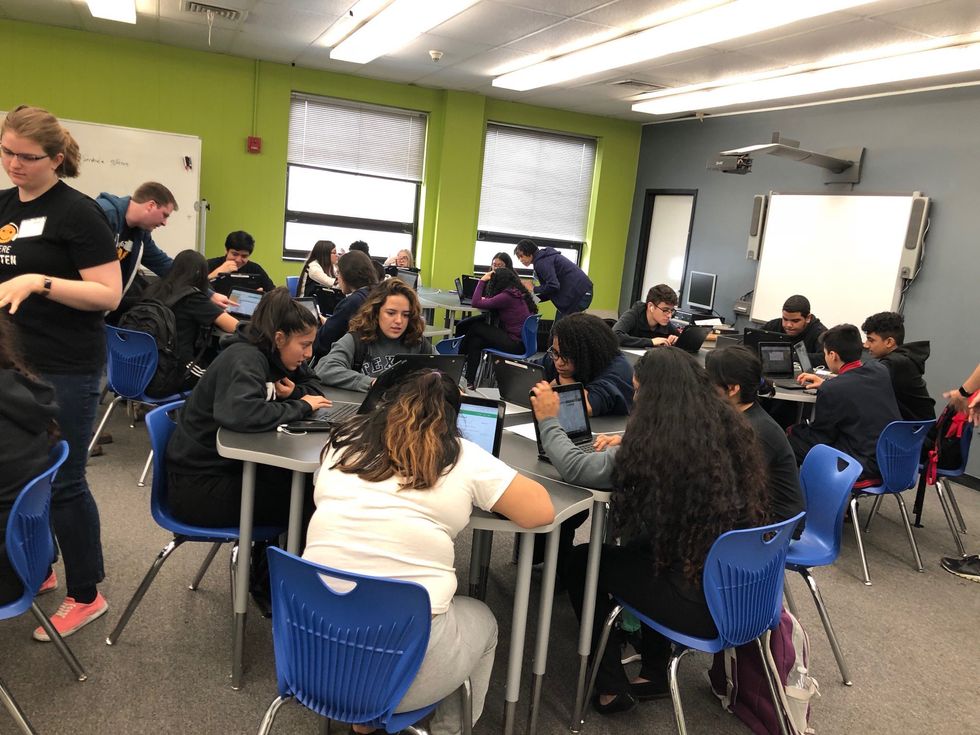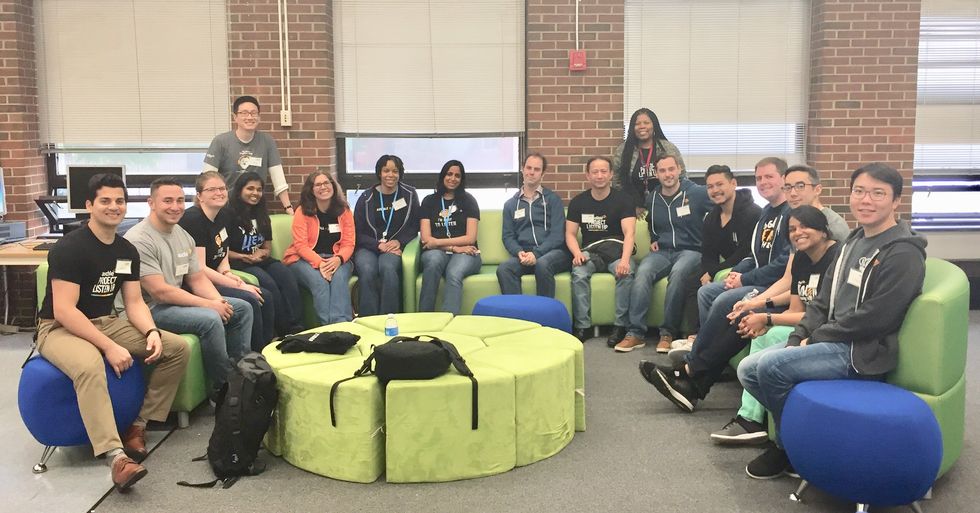Below is an article originally written by Sanjana Rao, a Software Development Engineer at PowerToFly Partner Audible, and published on May 22, 2018. Go to Audible's page on PowerToFly to see their open positions and learn more.
On Monday May 14th, a bunch of us from Audible, in partnership with Audible Cares, volunteered at Technology High School, here in our own hometown of Newark, with an aim to induct the students into computer programming.
After a brief introduction, we broke up into smaller groups and jumped right into a homework exercise: write the instructions for making a peanut butter and jelly sandwich. The point? To demonstrate that computers can literally only do what we tell them to, and that the devil is in the details. So basically, if you don't specify steps—that the peanut butter and jelly have to be spread on separate slices of bread, which should have been placed on the table, face up, before bringing them together into a sandwich—you might end up with peanut butter and jelly all over your hands (although that might not be too bad!). So at my table, I was the dumb computer and one of the girls read out the instructions. With those precise steps, it was impossible for me to not end up with a peanut butter and jelly sandwich.
Soon after the ice-breaker activity, we wanted to introduce the students to some fundamental concepts of computer programming like conditionals and looping constructs. We chose Code.org's HourOfCode exercises, which uses an interactive block-based coding console to ease the pain of syntaxes for beginners. The exercises involve popular characters like Angry Birds and the Grumpy Pig, Scrat and his Acorn (Ice Age), and revolve around the basic idea of "How do you get from point A to point B with the least lines of code?" They're arranged in increasing order of complexity but are a lot of fun! Needless to say, some of the kids were completely into it and kept engaging with their designated volunteers to follow through the activities and understand them conceptually. Some were way past the basics and were on to other intermediate activities listed on HourOfCode. The students exercised their curiosities, worked on their analytical skills, and understood the basics of writing algorithms.
The activity concluded with all of the students earning their certificates for completing an Hour of Code. Then there was a Q&A session, where we were asked questions like "How do you come up with a programming language?" "How long does it take for you to code?" "What sort of an Engineer writes code?" "When can you say that a product is done?" "What are your work hours like, do you work on weekends?" etc. And of course, there were swag giveaways—this is Audible!
To sum it up, we started the day off with introducing the various roles at Audible: Product Management, UX Design, Security, Software Engineering and Management, Quality Assurance, and Customer Service. What I found most interesting was watching the people I work with on a daily basis inspire around 50 high school students to be unafraid to embark upon a career in Technology. Hearing them define their roles and responsibilities made me realize the sheer number of people working hand-in-hand to make even a single audiobook accessible to our customers. That is how Audible-ites exhibit our strongest People Principle: Customer Obsession. And we find that the best way to demonstrate the same is by Activating Caring, which is building momentum through our Audible tech teams, in our own backyard: Newark, NJ.
For me personally, when the SDEs spoke about their roles, the problem-solving aspect struck a chord. It's just finding my way through the everyday chaos that happens between the lines of code that we as a team collectively own, that makes it all worth it.
Remember we are hiring! Audible is growing rapidly and always looking to add amazing people to our team. Check out our open positions and we'd love to hear from you.






